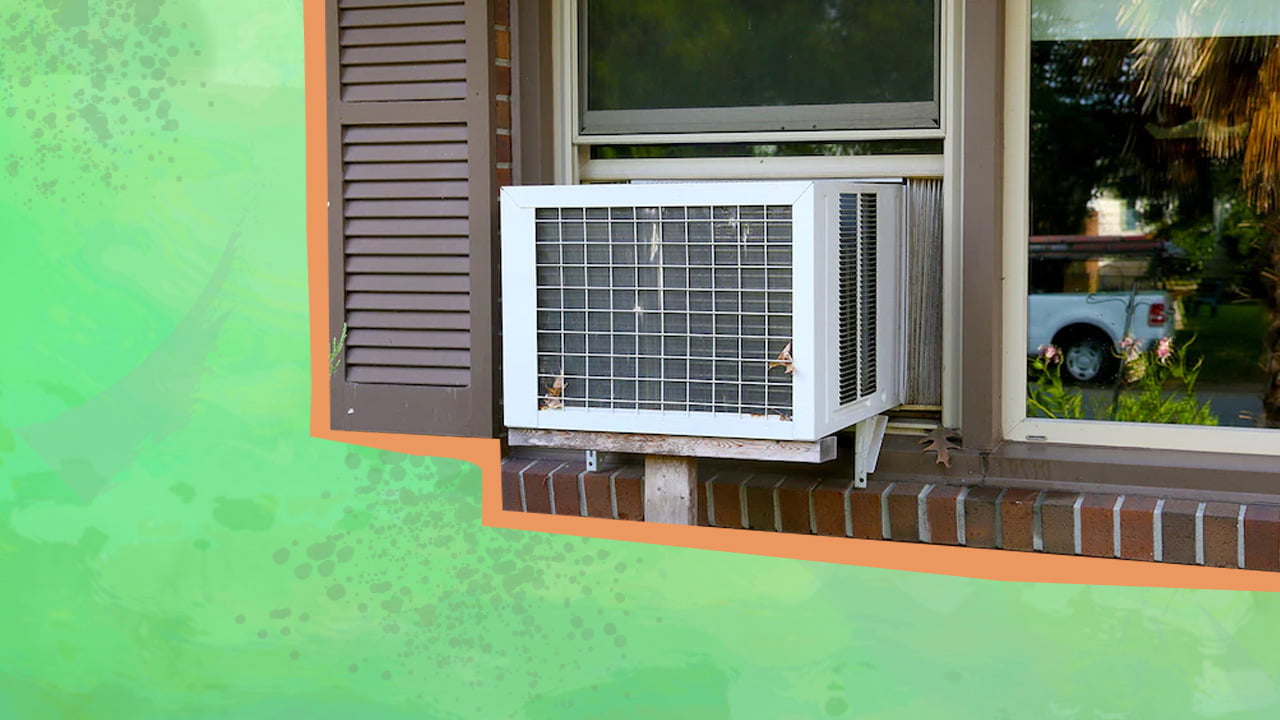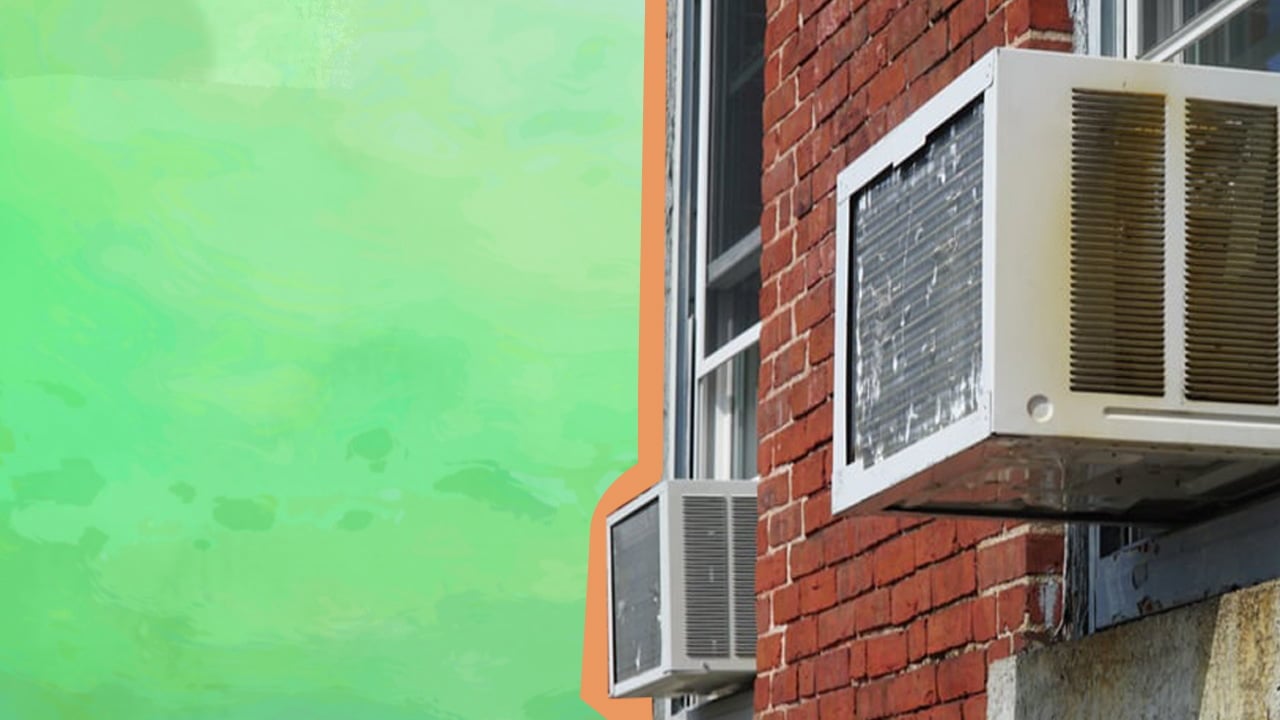The wattage of window AC units can be a versatile tool to gauge their cooling effectiveness and energy efficiency. Low wattage results in less energy consumed, and solutions like weather stripping and regular maintenance help maintain low power consumption.

Wattage is a measurement of how much power a device consumes. For window air conditioners, this can allow you to gauge both the cooling capacity and the electricity bill. And these factors will heavily affect which air conditioner unit you choose.
Follow this comprehensive guide to understand all about AC wattage, how to measure it, and what factors affect it. With this knowledge, you will be able to keep the electricity bill in reins, ensuring they don’t lighten your wallet much.
Understanding Window AC Wattage

1. Wattage And Energy Consumption
In the most elementary terms, wattage is simply the rate at which any electrical device consumes energy per unit of time. A watt unit can be defined as one joule of energy consumed by the device in a second.
Of course, each individual watt is not enough to measure the energy consumed by several large devices. This is why you will find the energy cost in kilowatts instead of just watts.
Wattage informs you about the cooling power of AC units, be it a window or central air conditioner. AC units with higher cooling capacity will naturally consume more power, and vice versa. By looking at its wattage, you can avoid choosing the wrong AC size.
And depending on the type of window AC, you may find its energy consumption listed in either watts or kilowatts. Smaller window air conditioners use less than a kilowatt of power per hour, making watts preferable as a measurement over kilowatts.
On the other hand, larger window air conditioners use 5,000 watts or more power when installed in locations like large halls. In such cases, you may want to use kilowatts as the primary unit of energy consumption.
2. How Many Watts Does A Window AC Unit Use
The wattage of a window AC is often listed in the specifications list. That said, depending on where you live, the cooling capacity or power consumption of the device may be in another unit.
If you run into a unit other than watts or kilowatts, you needn’t fret. There are two other ways you can determine how many watts a window AC unit uses, as detailed below.
A. Using Amperes And Volts
A volt is the potential energy in any two points of a wire when 1 ampere of charge emits a watt of power between them. To put it simply, it is a measurement of the strength of an electric current.
On the other hand, an ampere (colloquially known as an amp) is a measurement of electric current in the International System of Units (SI). Consider it to be the rate of electron flow in an electrical conductor like copper wire.
You will find these units listed in the specifications sheet of a window AC unit. The multiplication of both of these measurements will produce the wattage of the device as a result.
For instance, a 15-amp device with 150 voltage will have a wattage of 2,250 watts.
B. Using BTU And EER Rating
I. BTU
The British Thermal Unit (BTU) is one of the most common units that denote the window air conditioner’s cooling capacity. One BTU is defined as the amount of energy required to raise the temperature of 1 pound of room-temperature water by 1 degree Fahrenheit.
Moreover, some window air conditioners use BTU per hour as a unit of measurement, which can be considered the rate of energy transfer. The greater the BTU per hour rating, the more powerful and energy-consuming the AC will be.
II. EER
EER (Energy Efficiency Ratio) is another measurement of the cooling capacity of an AC for a particular amount of electricity. Most ACs like window and portable air conditioners are assigned this value, and the higher the rating, the more energy efficient the AC will be. This makes its inclusion in the conversion formula much more significant, as it results in a more accurate representation of the wattage of a device.
Some regions also use an Energy Star rating for determining the energy efficiency of an appliance. A high Energy Star Certified rating is given only to energy-efficient window ACs, which often includes low wattage window AC.
III. Formula To Measure Wattage Using BTU And EER
To find out the wattage of a window air conditioner, use both of these units in the following formula:
W = BTU/EER
To convert this into kilowatt-hour, simply divide the result obtained by 1,000.
Another point of consideration is the SEER rating which is sometimes used instead of EER. Like EER, it is the measurement of the cooling power of an AC per unit of electrical input. The only difference here is that SEER is calculated during the summer only, which is why it stands for Seasonal Energy Efficiency Ratio.
Tip
A general rule of thumb to know the EER of your cooling device is to multiply the SEER rating by 0.875. And you can input this value in the equation detailed above to derive the wattage of the window air conditioner.
3. Comparing BTUs To Wattage For Measuring Cooling Capacity
The reason there are two units for gauging the cooling capacity of an air conditioner is due to the different measurement systems. BTU is a product of the British Imperial System of Units, while watt is the standard unit of power from the International System of Units. Intriguingly, the United Kingdom uses the metric system, while the United States of America continue to use the British Imperial system of measurement.
On a fundamental level, BTUs and wattage denote different things. BTU measures the amount of energy consumed, while wattage is the rate of energy transfer. The former is typically limited to heat transfer rate or air conditioning, while the latter has a wider range of applications.
Since your monthly electricity bill is likely to be in kilowatts (kW), it may be preferable to use wattage as the primary unit for cooling capacity. Gauging the impact of your new window air conditioner on the energy bills becomes much simpler because of this simple reason.
And while the BTU is a perfectly good representation of measuring cooling capacity, it only denotes the power of the unit. Nothing more or less, which may make it more complex to know if a typical air conditioner has a drastic effect on your bills.
That said, there is a direct equivalence between BTU and wattage when considering both units in a vacuum. Every watt is equal to 3.412 BTUs per hour, and multiplying this number by 1,000 will net you the kilowatts the device consumes.
What Affects Window AC Wattage
Ideally, a window air conditioner should use as little energy as possible while cooling your room down sufficiently. Of course, the AC unit alone isn’t responsible for consuming more or less power than what is necessary.
There are several factors that govern the wattage of a window air conditioner, such as AC size, room layout, and more. Let’s take a look at each of these factors to see how they increase or decrease the wattage of an AC.
1. AC Unit Size And Power
If an AC is too large or too small for a room, it will consume more watts of electricity than what is necessary. This will have a noticeable impact on your electric bills, and the larger the size disparity, the higher the money spent will be. The reasons behind this are quite simple.
Air conditioners designed for large rooms consume more power to cool down the given space. When such a unit is installed in a smaller room, it consumes the same amount of power to cool the room down. The issue here is that a smaller air conditioner would achieve the same while consuming a fraction of the power.
Conversely, an air conditioner that is too small for a large room will have to work considerably harder to cool it down. It will take longer to have a cooling effect, if any, than what an appropriately large AC would.
An energy efficiency indicator known as CEER (Combined Energy Efficiency Ratio) will help you determine the correct AC size. The higher this ratio, the higher the AC efficiency.
2. The Size And Layout Of The Room
The size and layout of a room is equally as important when determining how much electricity an AC consumes. After all, not all rooms have a box-like structure, and some areas, like the attic, often have a slanted ceiling. Factors like sun exposure also affect how much electricity an AC consumes.
Due to this variation in size and layout, an air conditioner that doesn’t match the cooling requirements of the room will consume more power. To avoid paying more on your electric bill, you can look for the maximum recommended cooling area in the manufacturer’s specifications. Even for rooms with an unorthodox layout, this is a sound practice.
3. Regional Climate And Temperature
Warmer climates and higher local temperatures will have your window air conditioner working double-time to cool your home down sufficiently. The AC compressor has to work for longer and consistently at full throttle to compensate for the ambient temperature. Naturally, this leads to a marked increase in power consumption, something that is far from desirable.
While this is largely out of your control, you can mitigate it somewhat by running the air conditioner at 78 degrees Fahrenheit. And if you find 78 degrees a little too warm, consider starting here and gradually lowering it until you reach the preferred temperature.

How To Calculate Window AC Wattage
1. Calculating The Wattage Needed For A Specific Room Size
Let’s assume that a typical room has a ceiling that is about 8 feet high. To properly cool this room down, a window AC unit would require at least 20 BTU per square foot of living space. So, for a room with 250 square feet of living space, the AC will need to have a cooling capacity of 5,000 BTU.
Consider the following circumstances that can increase or decrease this value:
- 10% less cooling capacity for shaded rooms
- 10% more cooling capacity for rooms exposed to the sun
- Add 600 BTU per additional person if more than two people occupy a room
- Increase the cooling capacity by 4,000 for kitchens
Once you have determined the correct BTU rating for your room, use the formula detailed earlier to convert it to watts. And since both units are directly proportional, the higher the BTU value, the more wattage the window AC unit will need.
2. The Importance Of Choosing The Right AC Size
For energy savings and cost-cutting, there are several reasons why you should choose the right AC size. These include power usage, cooling efficiency, frequency of repairs, and longevity of the window AC unit.
Since cooling efficiency and power usage have already been a point of discussion earlier on, let’s go over the other two.
A. Repair Frequency
If an air conditioning unit has to work too hard for cooling or if it’s short-cycling frequently, it’s more likely to break down. Repairs do not come cheaply for a window air conditioner, or even portable air conditioners and central air conditioners, for that matter. And having to repair or replace parts on the system will quickly become expensive.
Not only is it a hefty blow to your wallet, but it is also extremely inconvenient for you and your family. You can take two preventive measures to avoid such a scenario: size your AC properly, and maintain the HVAC (Heating, Ventilation, And Air Conditioning) system regularly.
B. Improved Lifespan
An air conditioning unit is a hefty investment and naturally, you’ll want it to work well for as long as possible.
But if your window air conditioner is oversized and short-cycling, it will draw in extra power to start each time. The frequency at which this occurs can be damaging to your air conditioning unit. Similarly, if your AC is too small and running constantly, it will strain the cooling system enough to damage it in the long run. Having to recharge your window AC unit with refrigerant repeatedly is far from ideal.
You can avoid this by choosing the proper size for your air conditioning units. Be sure to look up all the pertinent information before you make the purchase!

Tips For Reducing Window AC Wattage
1. Air Conditioner Maintenance
Window air conditioners are complex devices with several moving parts that make them work. In the event of a part working in a sub-optimal condition, it will consume extra watts of electricity. And instead of working quietly, the window AC unit may begin emanating unusual noises.
To avoid this, you can have a professional perform routine maintenance on your cooling unit once a year. By having your AC serviced, you will notice an improvement in the cooling efficiency and power consumed by the system.
Additionally, be sure to clear out any dirty air filter to keep the airflow unimpeded. By doing so, your window AC will not have to work harder than it needs to, keeping it in good condition for a long while.
2. Have Your Walls Insulated
Wall insulation is a great way to reduce the wattage of your window or portable AC units. This results in cool air being trapped in the room so that the AC doesn’t have to consume as much power for temperature maintenance.
You will reap the most benefits from wall insulation during the summer when the temperatures are at their peak. Window, central and portable air conditioners all benefit from insulation.
3. Draw Your Curtains And Blinds
Direct sunlight can quickly warm up a cool room, effectively reducing the efficiency of your window air conditioner. By drawing your curtains, window blinds, or solar screens, your room will cool down quickly. Thus, your AC won’t consume as many watts of electricity to maintain the ambient temperature.
4. Install Portable And Ceiling Fans
Once your air conditioner has cooled your room down sufficiently, it will turn off until the temperature rises again. This can be mitigated somewhat by circulating the air inside the room, and what better way to achieve this than by using a fan!
By using a portable or ceiling fan to spread the cool air inside the room, your air conditioner will have some of its workload reduced. And since fans consume few watts of electricity to keep running even at the highest speed setting, you may save about 40% on the utility bill.
Tip
Consider turning the AC off completely once the room is cool enough and turning the fan on instead. You will notice that the room remains cooler for a significantly longer period when the fan is on.
5. Use A Programmable Thermostat
A programmable thermostat can help you reduce the wattage of your window air conditioner, effectively lowering the estimated yearly energy cost. You can use it to create schedules for your AC or program it to turn on or off when the room temperature reaches a certain point.
Smart thermostats can sense when a room is not in use, which is when it will turn the air conditioner off. Or, if you so wish, it can keep the AC running on low power to cool the room down until your return.
6. Install Weatherstripping
Weatherstripping is a low-price solution to plugging air leaks in your home. This involves using one of several kinds of strips made from wood, rubber, or foam to insulate the house, improving its efficient energy use.
The main goal of weather stripping is to prevent cold air from leaking out of your home. Once all the primary leakage points, like cracks, doors, and windows, are all sealed, your air conditioner will work a lot more efficiently.
7. Don’t Use Heat-Producing Devices
Home appliances like stoves, dishwashers, and ovens create a lot of heat as they work, which can increase the room temperature. As a result, the AC has to draw more electric power to compensate for the increase in room temperature, increasing your electricity costs.
You can mitigate the electric energy consumption of your devices by using them when the temperature isn’t as high. With this, your AC won’t be overloaded, improving its performance and keeping it working well for a long time.
Typically, a window AC wattage ranges from 400 watts to 2,425 watts, depending on the size of the room. An average-sized room may only require a 900-watt or 3070-BTU window air conditioner. Using this air conditioner for around 8 hours every day requires about 200 kilowatt-hours of power per month. Unlike the measurement of weight, a ton denotes the cooling capacity of the air conditioner rather than its weight. It is calculated with the size and layout of the room being the primary considerations. A simple way to calculate the tonnage of your window AC unit is to divide its BTU rating by 12,000. For instance, an 18,000 BTU AC would have a tonnage of 1.5 tons.Wattage Of Window AC Related FAQs

Conclusion
Learning about AC wattage may seem daunting at first, but the core concept is simple to understand. It can be a great way to gauge the performance and energy efficiency of an air conditioner, something that remains useful even after purchasing one.
Window air conditioner wattage is dependent upon several factors, the primary of which is the size of the cooling unit. Be sure to size your air conditioner appropriately when purchasing one, as it can dramatically affect your electricity consumption and costs.
And lastly, you can take steps both significant and simple to reduce the AC wattage. The number of ways of optimizing the energy efficiency of your cooling unit is endless, and using them pays massive dividends in the long run.
